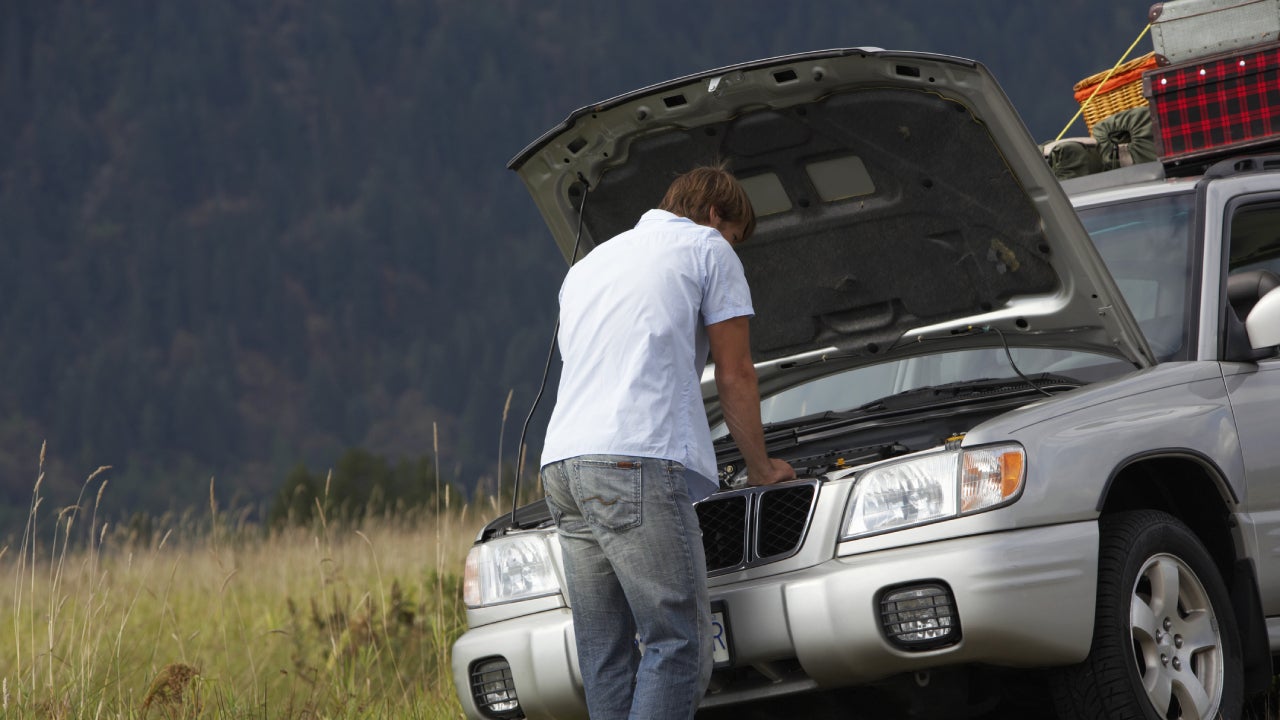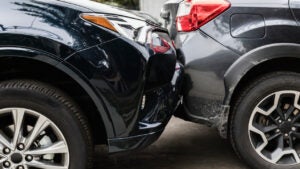Comprehensive vs. collision insurance

Comprehensive and collision insurance are physical damage coverage options that financially protect your vehicle. Collision may pay to repair your car if you’re at fault in an accident. Comprehensive, on the other hand, may pay for damage caused by things generally out of your control, such as weather events, theft and vandalism. When purchased together, these options are usually referred to as “full coverage” and may help bolster a liability-only policy. Understanding collision vs. comprehensive insurance may help you choose the best coverage package for your car insurance needs.
Collision vs. comprehensive insurance
Full coverage car insurance usually means that you have financial protection for your vehicle in case of a covered claim. Although some call full coverage “collision and comprehensive insurance,” these options are not individual policies but are coverage options that you can add to an existing car insurance policy. Many people purchase collision and comprehensive as a package, but you can buy them individually (unless you’re required to carry both by your lienholder).
Liability-only car insurance means you only have financial protection for the other party if you cause injuries or property damage in an at-fault accident. For example, if you have a liability-only policy and cause an accident, your car insurance will not pay to repair the damage to your vehicle. Instead, your policy will pay to repair the damage you cause to the other vehicle (up to the property damage limit you carry on your policy).
The following table illustrates different types of vehicle damage covered with collision vs. comprehensive.
| Type of coverage | Comprehensive | Collision |
| What does it cover? | Broken windows or windshields Hitting an animal Vandalism Theft of the vehicle Weather damage Fire damage Flood damage Falling objects |
Collision with another person’s property, such as their car or home Collision with another object, such as a tree, fence or light pole Damage from a car accident, regardless of fault |
Comprehensive coverage
Comprehensive coverage is sometimes referred to as “other-than-collision” coverage because it may pay for damage to your vehicle caused by instances other than a car collision. Comprehensive coverage may help pay for scenarios like broken car glass, fixing your car after hitting an animal, fire damage and damage from fallen objects.
Collision insurance
Collision insurance may help pay to repair your vehicle if you are at fault in an accident or if you hit a stationary object. A stationary object could be a tree, light pole or a shopping cart left in the parking lot. In some instances, collision may also repair your car if someone hits you and they have no insurance or if you are hit by a hit-and-run driver.
Deductibles for comprehensive and collision insurance
Comprehensive and collision are separate physical damage coverage options, which usually include separate deductibles. This differs from liability insurance, which has no deductibles for either party when a claim is filed. The deductible is the amount you must pay out of pocket after filing a claim. You may choose your deductible based on options provided by your insurer, which may be the same for both comprehensive and collision. Typically, the higher the deductible, the lower the premium. However, you will have to pay more out of pocket with a higher deductible if you have to use either coverage.
When requesting car insurance quotes, it may be helpful to compare different deductible levels to see how they impact your overall premium. For instance, you might be able to lower your comprehensive deductible for a slight change in premium, but that same deductible could cause a more significant increase in your rate when applied to collision coverage.
Do I need comprehensive and collision insurance?
Although collision and comprehensive coverage are not required by law, the most recent data analyzed by the Insurance Information Institute (Triple-I) shows 80 percent of insured drivers buy comprehensive coverage and 76 percent purchase collision coverage. Some scenarios may require you to carry full coverage, such as leasing or financing a car.
You might also want to consider adding comprehensive and collision insurance if:
- There is a high likelihood of weather events, animal collisions, vandalism or car thefts in your area.
- You do not have the funds to repair or replace your car after an accident or comprehensive-related scenario.
- Your car is less than 10 years old or still has a high market value.
"My car is paid off, but I still carry full-coverage insurance. It's worth it for the peace of mind. It doesn't cost much more for comprehensive coverage. My car retained a big chunk of its original value, and I like knowing it's protected."— Harlan Vaughn, Bankrate senior editor
If your car is older and not worth much, you may decide comprehensive and collision insurance are not worth the cost. Or, you may decide to keep comprehensive but not collision. For instance, it could be worth maintaining comprehensive if the cost is nominal, and you have a lot of deer in your area. Some people may also choose to keep comprehensive so that their windshield is covered.
To help decide if you need one or both coverage options, it may be helpful to determine the market value of your car and compare that value to the cost of coverage. If your car were totaled, the auto insurance company would only pay the actual cash value minus your deductible. Many experts use a general rule: if the average cost of the coverage is 10 percent or more than the payout you could expect to receive, it may not be worth paying for full coverage.
Do comprehensive and collision coverage cost the same amount?
Collision coverage usually costs more than comprehensive coverage. According to Triple-I, it costs an average of $290 per year for collision coverage. Comprehensive coverage costs less than half of that, averaging $134 per year.
Collision coverage tends to cost more because it covers your vehicle’s repairs after you cause an accident. Statistically, it’s more likely that you’ll cause an accident than hit a deer or have a tree fall on your vehicle. Collision claims can also be more expensive.
Frequently asked questions
Why we ask for feedback Your feedback helps us improve our content and services. It takes less than a minute to complete.
Your responses are anonymous and will only be used for improving our website.
You may also like

Mechanical breakdown insurance

Car insurance after a hit-and-run in California






